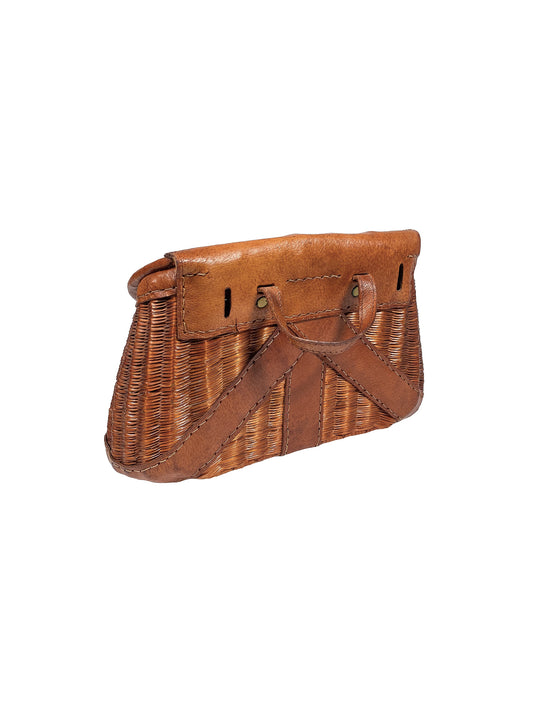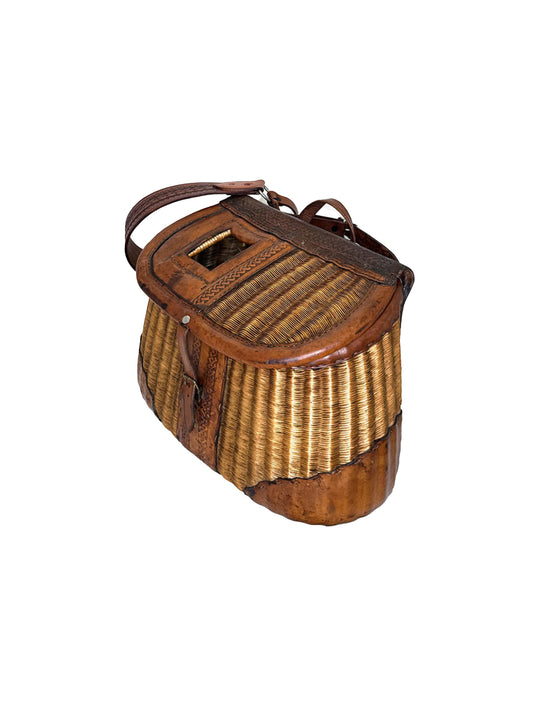American folk art, the creel has its roots in Scotland and were originally, as most still are today, handmade from wicker and meant to be used to preserve fish after it was caught riverside until it arrived home by lining the interior of the creel with moss or wet ferns to keep the interior cool.
Most creels were designed with a cutout hole in the lid that allowed for slipping the catch into the creel without opening it and releasing disrupting the cool environment. Most of the collectible creels today were wicker and wood vessels handwoven in Japan and shipped to the United States during the 1800s. It was in the Pacific Northwest that creels were most revered and craftsmen began trimming imported creels with leather to reinforce them and add artistic flourish for anglers. Perhaps the most notable creel leather tooler was George Lawrence Co. Headquartered in Portland, Oregon, this company provided detailed embossing and artisan leather tooling that remains the gold standard and specimen to which all others are measured. Our collection of creels represents the best of creel-making artistry and has samples of creels made for children, women, and men who made their life’s earnings fishing the streams and rivers of America. Some creels have original leather straps for cross-body carrying while most have straps added to the creels aftermarket. Highlights of the collection include renowned artists such as Dan Brock, an Oregon native who still today adds his leather tooling artistry to creels, and Ken Haggard, a Nebraska native known for tooling creels from the 19th century, along with original valuable creels from George Lawrence.
























